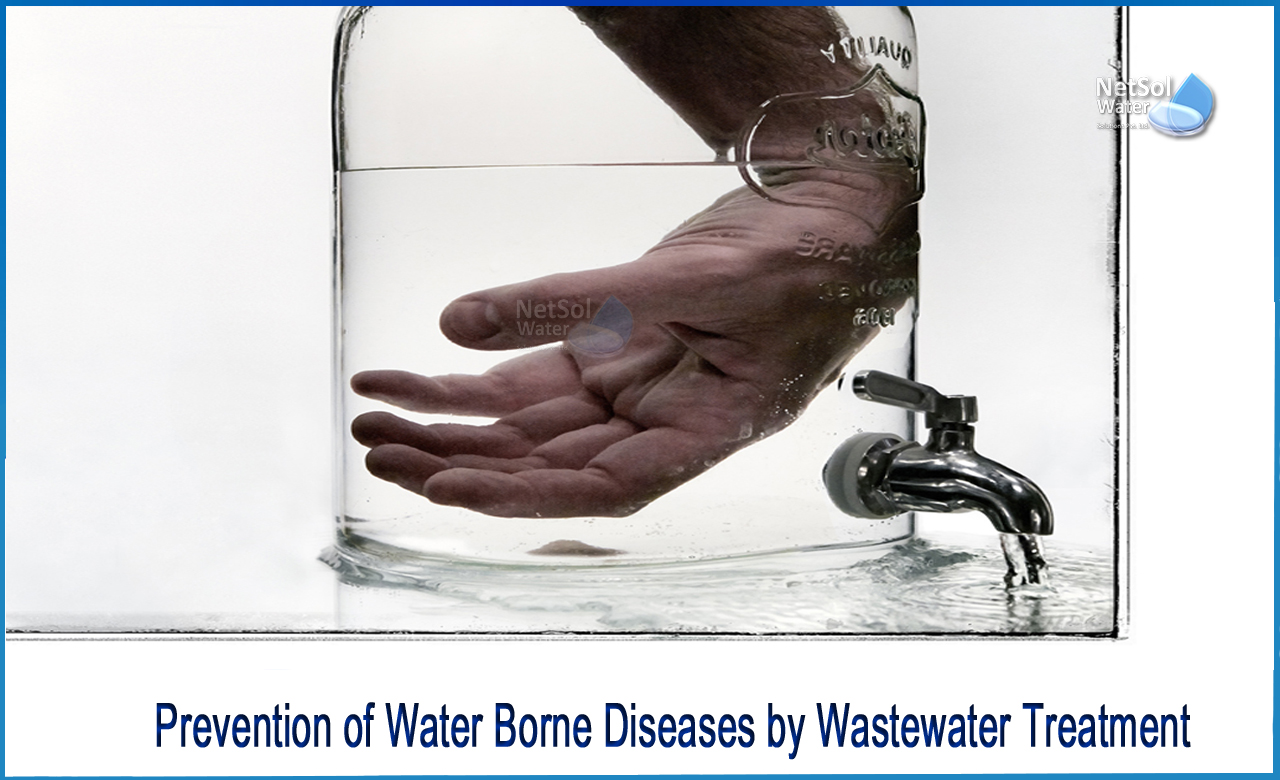What is the prevention of water borne diseases by WWT?
Water may be both a life-giving and a life-taking fatal fluid. Unhygienic and poor-quality water is responsible for around 3.1% of global deaths.
According to the World Health Organization, waterborne infections account for 80% of all diseases worldwide.
Treatment of wastewater from all sources is critical, but treating a community's drinking water reserve entails additional responsibilities. The primary goal of wastewater equipment in a public drinking water treatment system is to remove pollutants and disease-carrying bacteria. In a typical system, primary and secondary waste treatments eliminate 85 to 95% of pollutants from wastewater before the system disinfects it with chemical dosing and discharges it into local waterways. Water treatment systems work to eliminate these hazardous chemicals from the water in order to keep people safe.
Water Borne Diseases
1: Hepatitis A: The Hepatitis A virus causes this avoidable disease. Viruses are microscopic parasitic creatures that are smaller than bacteria and pose a variety of risks to people when present in drinking water. Hepatitis A cannot cause a persistent infection, although it can cause symptoms such as stomach pain, nausea, exhaustion, and jaundice. Within two months of infection, these symptoms should disappear.
2: Giardiasis is a parasitic infection caused by a tiny parasite called Giardia. The parasite has an outer shell that protects it and allows it to survive for lengthy periods of time outside of a host body. This shell can also render it resistant to chlorine treatment, making water the parasite's most common mode of transit.
3: Salmonella is most commonly associated with food contamination; however, it can also be found in untreated drinking water. Every year, this bacterium causes 1.2 million infections, including fever, stomach pains, and diarrhoea.
4: Shigella: Shigellosis is an infectious disease caused by a genus of bacteria called Shigella. Fever, diarrhoea, and stomach cramps are among the symptoms of the infection, which are similar to salmonella. People can still become infected with the disease without showing symptoms, making it simple to spread.
5: Legionella: is a bacteria that causes Legionnaires' illness as well as Pontiac fever. Pontiac fever is a lesser version of Legionnaires' disease, which is a deadly kind of pneumonia. When people inadvertently take Legionella-contaminated water into their lungs, they can become ill with either.
How Does Wastewater Treatment Aid in Disease Prevention?
The removal, killing, or "inactivation" of a major amount of the contaminants and disease-causing organisms in wastewater is accomplished through a series of operations.
1: The solid materials are typically filtered out or allowed to settle and separate from the remainder of the wastewater in most treatment processes. Beneficial bacteria naturally grow in the sediments, or "sludge," providing some early treatment for the sludge and any wastewater that comes into touch with it.
2: The effluent is usually treated further using a combination of filtration, biological, and chemical methods. To allow for additional settling and bacterial treatment, liquids are frequently held for a length of time.
3: After that, the sludge is treated further with lime or chemicals, air drying, heat drying, or composting. It is burned, buried in landfills, used as commercial fertiliser, scattered on forested land, or dumped in the ocean for final disposal.
4: Soil can also be used to assist in the treatment of wastewater. If the conditions are perfect, liquid wastes can be put to soil, where the majority of pollutants are eliminated, inactivated by microbes, stuck to certain soil elements, or filtered away before reaching groundwater. In regions where the native soil or geographical conditions are not suitable for this purpose, sand or other media might be utilised in place of soil.
5: Disinfection is usually the final treatment stage for wastewater discharged near or directly into surface water or for groundwater recharge from municipal treatment plants. Many pathogens that have escaped earlier treatment techniques are inactivated by chlorine, ozone, UV light, or other chemical agents
While wastewater treatment is critical for water quality protection, it is simply one line of defence against diseases. Water frequently requires additional treatment before it is safe to drink.
Netsol Water is Greater Noida-based leading water & wastewater treatment plant manufacturer. We are industry's most demanding company based on client review and work quality. We are known as best commercial RO plant manufacturers, industrial RO plant manufacturer, sewage treatment plant manufacturer, Water Softener Plant Manufacturers and effluent treatment plant manufacturers. Apart from this 24x7 customer support is our USP. Call on +91-9650608473, or write us at enquiry@netsolwater.com for any support, inquiry or product-purchase related query.



